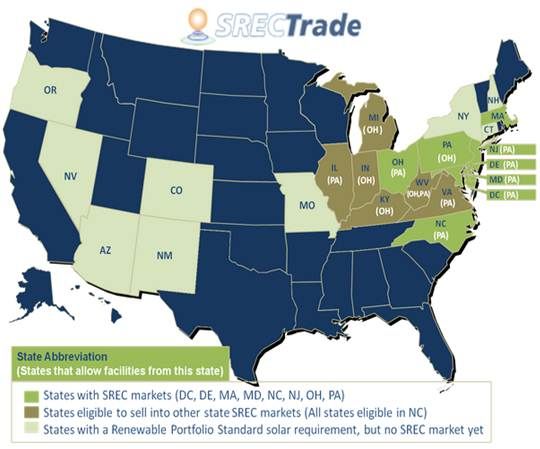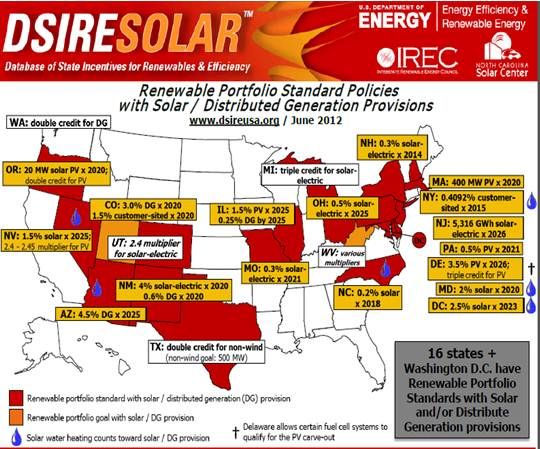In pursuit of a more secure revenue stream for its investors, Clean Power Finance (CPF) is expanding into the tricky renewable energy credit (REC) commodity market.
CPF’s software platform, which came on-line in 2007 backed by venture capital, is presently used to quote some 40 percent of all U.S. residential solar deals. Installers use CPF’s web tools to design, propose and sell solar systems. CPF is also leveraging its software experience to improve the processes of finding and winning of customers. With institutional investors’ backing, CPF uses its installer-partners to channel third-party dollars into distributed solar installation by the hundreds of millions.
With these services, CPF is lowering the risk in solar and bringing money into the sector at the rate of over a million dollars a day.
Third-party finance, the fastest-growing solar financing mechanism in the U.S., works because institutional investors see solar as a sound, low-risk place to put their money while, through lease and power purchase agreements (PPAs), installers can offer businesses and homeowners solar systems with little or no upfront costs.
The financing mechanism works well for all involved. Institutional investors get the 30 percent federal investment tax credit and the federal accelerated depreciation as tax shelters. They also get the lease or PPA payments as a revenue stream. CPF earns a fixed fee from each deal. Installers get the work because businesses and homes get solar electricity at below utility bill rates.
Now CPF hopes to make the revenue stream that comes from the trading of solar renewable energy credits (SRECs) more appealing to investors by adding CPF Capital & Trading to administer the program.

“We are striving to build a marketplace and platform that can be leveraged by providers of capital looking to invest in solar systems and seekers of capital who are looking for financial products to sell to home and business owners to grow their businesses,” explained CPF Senior Vice President of renewable capital markets Kristian Hanelt.
SREC markets, he said, “are unique in their own ways and can be quite intimidating for investors looking to deploy capital into solar but who aren’t tasked with spending time learning granular ins and outs of marketplaces.”
In 29 states and the District of Columbia (D.C.), there are mandates requiring electricity providers, generically called Load Serving Entities (LSEs), to obtain a portion of their power from renewable sources. In many of those states, LSEs are allowed to use purchased credits, called Renewable Energy Credits (RECs), to comply with part of their renewables obligation.
Sixteen states and D.C. have a carve-out specifying a portion of the renewables obligation to be solar (or distributed generation). Six states (Delaware, Maryland, Massachusetts, New Jersey, Ohio and Pennsylvania) and D.C. provide for the sale of SRECs to meet a portion of the carve-out. North Carolina is in the process of implementing SREC sales.
If a state (1) has a solar carve out, (2) allows trading of SRECs by generators of solar electricity, and (3) penalizes LSEs who do not comply with the renewables and solar requirements, an SREC market can be an effective way to drive the growth of solar there.

Sales of SRECs were until now “non-contracted and subject to commodity risk,” explained CPF Director of Environmental Markets Paul Joyce, who will head up CPF Capital & Trading. Joyce was with the Chicago Board of Trade for ten years, then at the San Francisco Department of Environment and, most recently, led REC trading at the 3Degrees Group.
Demand for SRECs, and, consequently, the price of SRECs, fluctuates with market demand. When LSEs are building or buying their own renewables projects, for instance, demand may fall off. If obstacles prevent bringing those projects to fruition, the LSEs many need the SRECs and demand may rise.
Current prices, according to SRECTrade.com, range from $15 per megawatt-hour (atypically low, for Ohio’s out-of-state buyers) to $545 per megawatt-hour (atypically high, for Massachusetts’ emerging and carefully controlled market). More typical prices range from around $150 per megawatt-hour (New Jersey, July) to $295 per megawatt-hour (D.C., July).
Now, through CPF Capital & Trading, the SREC revenue stream will be part of the contract between investors and CPF, guaranteeing the investor a return and transferring the volatility of commodity trading to CPF.
“Investors don’t want to become experts in local markets or carry commodity exposure to something they don’t understand,” Hanelt explained. As an expert in the field of commodities and RECs trading, Joyce’s role, Hanelt said, will be “to de-risk commodity exposure” for CPF investors.
Given the sheer volume of SRECs being added through U.S. solar growth, Hanelt said, “We see this as a multi-million-dollar-per-year opportunity.”
The revenue from the sales of SRECs was already available to CPF investors, Hanelt explained, but they did not always take advantage of it because of the associated risk and uncertainty. Now, he said, the company will create an SREC market for them. “Investors still get the SREC value, but now without the volatility.”



